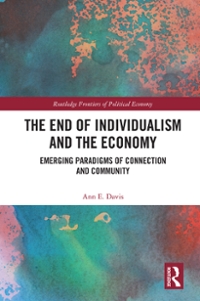Question
Discuss the value of Hofstede's values study to managers 7. Discuss arguments for and against social responsibility. 8. List and discuss two reasons for planning.
Discuss the value of Hofstede's values study to managers
7. Discuss arguments for and against social responsibility.
8. List and discuss two reasons for planning.
9. Define and discuss management by objectives (MBO).
10. Describe the characteristics of a functional structure.
11. Describe the characteristics of a divisional structure.
12. Describe the matrix structure. What are its advantages and disadvantages?
13. List and discuss how Maslow's hierarchy of needs theory works.
14. Describe how managers might motivate professional workers.
15. Describe the basics of situational leadership theory (SLT).
16. Define and describe the management function of control. What are the four steps of the control process? Explain why Control is critical to the management process.
17. Explain why what managers choose to measure can be more important than how they measure. 18. Explain the differences between the Kotter and Lewin approaches on Change Management
Question 8
Water flowing at the rate of 1 kg/s through a system is heated using an electric heater such that the specific enthalpy of the water increases by 2.50 kJ/kg and the specific entropy increases by 0.007 kJ/kg.K. The power input t o t he electric heater is 2.50 kW. There is no other work or heat interaction between the system and the surroundings. Assuming an ambient temperature of 300 K, the irreversibility rate of the system is, One side of a wall is maintained at 400 K and the other at 300 K. The rate of heat transfer through the wall is 1000 W and the surrounding temperature is 25C. Assuming no generation of heat within the wall, the irreversibility (in W) due to heat transfer through the wall is.?
Question 9
The pressure, temperature and velocity of air flowing in pipe are 5 bar, 500 K and 50 m/s, respectively. The specific heats of air at a constant pressure and at constant volume are 1.005 kJ/kgK and 0.718 kJ/kgK, respectively. Neglect potential energy. If the pressure and temperature of the surroundings are 1 bar and 300 K, respectively, the available energy in kJ/ kg of the air stream is?
Question 10
During a non-flow thermodynamic process (1- 2) execut ed by a per fect gas, t he heat interaction is equal to the work interaction (Q1.2= W12) when the process is, A vehicle powered by a spark ignition engine follows air standard Otto cycle ( = 1.4). The engine generates 70 kW while consuming 10.3 kg/hr of fuel. The calorific value of fuel is 44000 kJ/kg. The compression ratio is (correct to two decimal places).
Question 12
A gas turbine with air as the working fluid has an isentropic efficiency of 0.70 when operating at a pressure ratio of 3. Now, the pressure ratio of t he t ur bi ne i s i ncr eased t o 5, whi l e maintaining the same inlet conditions. Assume air as a perfect gas with specific heat ratio = 1.4. I f the specific work output remains the same for both the cases, the isentropic efficiency of t he t ur bi ne at t he pr essur e r at i o of 5 is?
Question 13
Consider a simple gas turbine (Brayton) cycle and a gas turbine cycle with perfect regeneration. In both the cycles, the pressure ratio is 6 and the ratio of the specific heats of the working medium is 1.4. The ratio of minimum to maximum temperatures is 0.3 (with temperatures expressed in K) in the regenerative cycle. The ratio of the thermal efficiency of the simple cycle to that of the regenerative cycle is?
Question 14
In a Rankine cycle, the enthalpies at turbine entry and outlet are 3159 kJ/kg and 2187 kJ/ kg, respectively. If the specific pump work is 2 kJ/kg, the specific steam consumption (in kg/ kWh) of the cycle based on net output is,
Steam with specific enthalpy (h) 3214 kJ/kg enters an adiabatic turbine operating at steady state with a flow rate 10 kg/s. As it expands, at a point where his 2920 kJ/kg, 1.5 kg/s is extracted for heating purposes. The remaining 8.5 kg/s further expands to the turbine exit, where h = 2374 kJ/kg. Neglecting changes in kinetic and potential energies, the net power output (in kW) of the turbine is?
Question 15
For a gas turbine power plant, identify the correct pair of statements. P. Smaller in size compared to steam power plant for same power output Q. Starts quickly compared to steam power plant R. Works on the principle of Rankine cycle S. Good compatibility with solid fuel, In an ideal Brayton cycle, atmospheric air (ratio of specific heats, c/cv= 1.4, specific heat at constant pressure = 1.005 kJ/kgK) at 1 bar and 300 K is compressed to 8 bar. The maximum temperature in the cycle is limited to 1280 K. If the heat is supplied at the rate of 80 MW, the mass flow rate (in kg/s) of air required in the cycle is?r
Step by Step Solution
There are 3 Steps involved in it
Step: 1

Get Instant Access to Expert-Tailored Solutions
See step-by-step solutions with expert insights and AI powered tools for academic success
Step: 2

Step: 3

Ace Your Homework with AI
Get the answers you need in no time with our AI-driven, step-by-step assistance
Get Started


